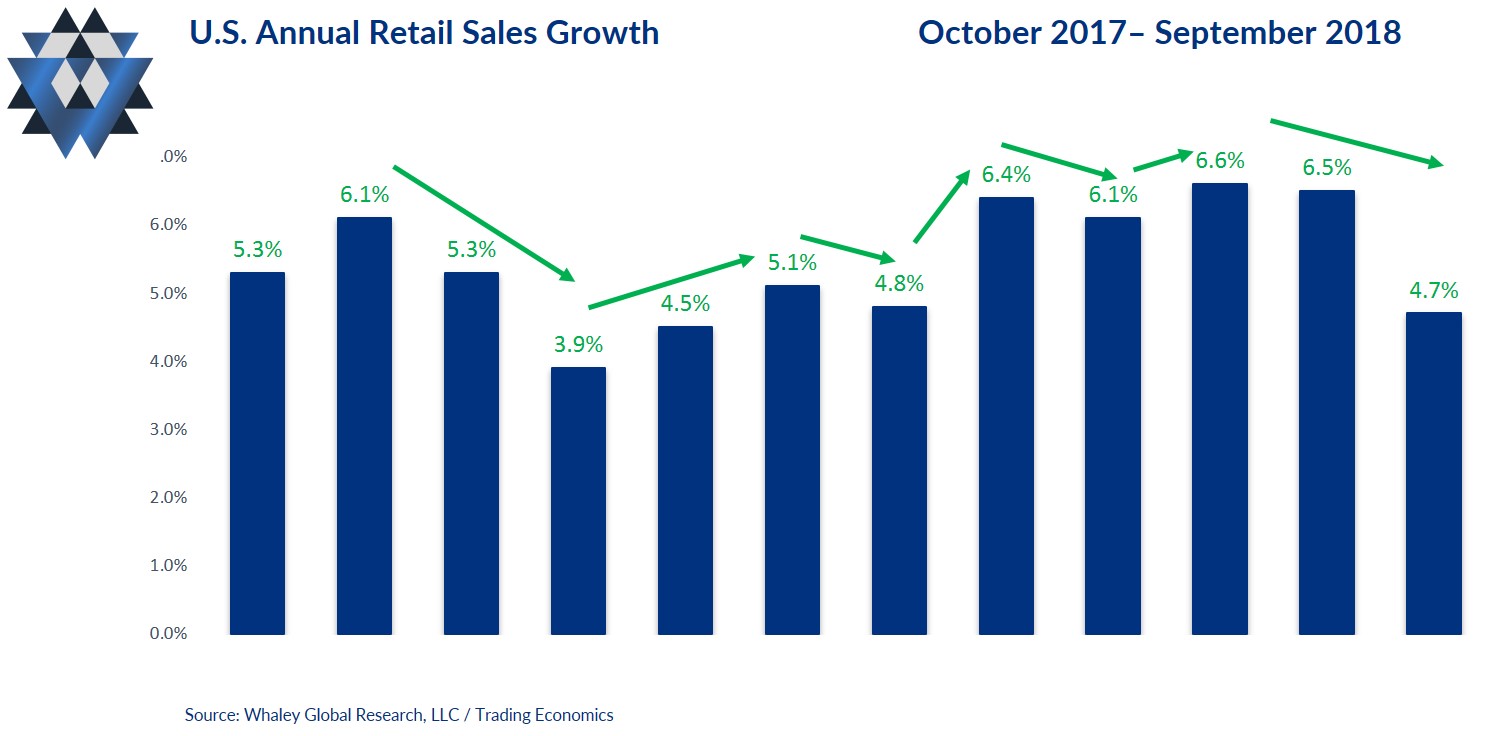Headline risks are everywhere, much like Subaru vehicles and Bernie bumper stickers in Asheville, North Carolina, writes Landon Whaley Tuesday.
As an investor you must keep your head on a swivel and humanness in check so that you’re not drawn into beautifully spun narratives that seemingly unveil the mystery of financial markets.
This week’s “Headline Risk” focusses on the erroneous ways the media and Wall Street evaluate economic data and how you can use their flawed process to your advantage.
One of our three core principles is to focus on the slopes (trends) across economic and financial market data. In contrast, most investors (professionals and retail alike), media gurus and other market participants focus almost exclusively on averages.
For this reason, you can garner a true edge and subsequent ability to outperform other investors over long periods by focusing on the “slopes,” which are the changes over time of fundamental and quantitative data at the margin.
When a fundamental data point is released, the first thing most analysts and talking heads do is judge how that number stacks up against expectations.
But what are expectations? This is just another word for consensus, and a consensus is just an average of economists’ forecasts. For example, last week we received the latest U.S. retail sales report. In September, retail sales grew +0.1% month-over-month from August. Commentators compared this growth rate to the “expected” +0.7% month-over-month growth rate, which was the consensus of 83 economists.
What does this tell us? It tells us that retail sales came in below the average expectation of 83 economists. Does that information give us an edge? Absolutely not! We already know that forecasting is foolhardy and that no one predicts as inaccurately as economists, except for maybe meteorologists. We also know there is a danger in using averages of any kind. This means that an average of forecasts is the worst possible tool to use when trying to evaluate economies and markets.
The other way Wall Street and the media screw up economic analysis is by focusing on the monthly growth rate of an economic data series. Focusing on the monthly growth rate of last month’s retail sales is what led CNBC to state “U.S. retail sales edged up amid the biggest drop in spending at restaurants and bars in nearly two years.” It’s no wonder their viewership continues to lurk in a multi-year bear market.
By far the most critical and informative aspect of any economic data series is the slope, or trend, in the annual growth rate — not the month-to-month change. September’s retail sales annual growth rate did not “edge up.” Instead, it careened off a cliff, slowing to +4.7% from August’s +6.5%. In fact, retail sales growth has now slowed for two consecutive months and is at an eight-month low.

That evaluation of the annual growth rate paints a much clearer picture than whether a bunch of economists managed to guess the monthly growth rate. No matter what you’ve been led to believe, it doesn’t matter if a data point meets, beats or disappoints what Wall Street expected. Economic data is not “good” or “bad,” and it certainly can’t exceed your expectations or disappoint you; it’s not your significant other. Describing data as “good” or “bad” is an opinion. Economic data is either accelerating or slowing; those are facts.
The headline risk bottom line is that it doesn’t matter one iota how a data point does versus what a Street full of economists thought would happen for one month. Measuring and mapping the slopes of economic data is how we nailed the global growth-slowing call nine months before everyone else. It’s also how we nailed the current U.S. “FG4 in Q4” environment before the markets tattooed unsuspecting investors.
Most investors are satisfied with the status quo of using averages to drive their investment process. That’s why most investors have a very difficult time earning consistent, above-average returns through varying Fundamental Gravity environments.
Please click here and sign up if you’d like to receive the latest edition our research reports as well as to participate in a four-week free trial of our research offering, which consists of three weekly reports: Gravitational Edge, The 358, and The Weekender.
Watch Landon Whaley’s 3 Ideas for Investing in a short video here.
Recorded: MoneyShow Dallas Oct. 5, 2018.
Duration: 6:42.
Watch Landon Whaley discuss When Markets Cycle in a short video here.
Landon Whaley: We have a generation of investors and asset managers who know only one market. The reality is markets and economies cycle and catch people off guard.
Recorded: MoneyShow Dallas Oct. 5, 2018.
Duration: 5:51.
Landon Whaley interviews Adrian Manz: How I approach stocks here.
Recorded: MoneyShow Dallas Oct. 5, 2018.
Duration: 7:48.
Landon Whaley interviews trader Jackie Ann Patterson: How I got started trading and how I approach it with my Truth about ETF Rotation here.
Recorded: MoneyShow Dallas Oct. 5, 2018.
Duration: 6:14.





















